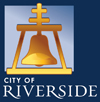City of Riverside Embraces Innovation District Approach to Creating Jobs
Published: 01/11/18
FOR IMMEDIATE RELEASE:
Jan. 11, 2017
Contact:
Phil Pitchford
Communications Officer
951-826-5975
City of Riverside Embraces Innovation District Approach to Creating Jobs
First such district proposed for area ripe with potential
RIVERSIDE, Calif. – Riverside has embraced the concept of creating innovation districts across the city as a way to attract new investment, retain local talent and create jobs, with the first such district located roughly between downtown and UC Riverside.
The approach, which was first proposed by Mayor Rusty Bailey during a State of the City address, was unanimously endorsed by the Riverside City Council as a way to encourage economic development. The council’s decision followed a recommendation of a blue ribbon panel that studied the issue for several months.
“Innovation districts hold a lot of promise as a tool for attracting investment and creating jobs in our community,” Mayor Bailey said. “I am very grateful to the Innovation District Committee for its work in identifying how we can use this approach to leverage our existing community capital to build prosperity for future generations.”
Innovation districts have been used across the U.S. to focus attention on areas that have potential to become an economic engine as a result of their proximity to established neighborhoods, schools and colleges, business districts and other community assets. The districts often bring economic life to architecturally significant buildings that are not reaching their full potential through routine market forces.
Innovation districts often feature start-up businesses, readily available transportation options, art and artists, ethnic food and markets, intriguing public spaces and performance opportunities. They frequently are wedded closely to technology, including high-speed internet and tech firms that employ graduates from nearby colleges and universities.
In addition to embracing the concept, the City Council agreed to pursue the city’s first innovation district in a three-square-mile area that includes part of downtown Riverside, portions of North Main Street, an industrial area north of Third Street near the 60/91/215 interchange, packinghouses just east of downtown, the Eastside neighborhood and UC Riverside, including the new home of the California Air Resources Board labs and testing facility.
This pilot area was attractive to the Innovation District Committee because it includes the energy of downtown Riverside; the convenience of having two Metrolink stations; a strong history of entrepreneurship, as demonstrated by the existence of roughly 1,700 businesses, including large employers like SolarMax, Luxfer and GAR Laboratories; underutilized industrial and business properties that are ripe for adaptive re-use; the intellectual resources at UCR, RCC, the RUSD STEM School, the Encore High School for the Arts and the Riverside Arts Academy; the UCR Medical School; and the community heritage of the Eastside and Northside neighborhoods.
“The site for our first Innovation District includes many of the attributes that can be found at successful districts around the country,” said Assistant City Manager Al Zelinka, who is closely involved with the effort. “The Innovation District approach is a great opportunity to use our best community assets to demonstrate why it makes so much sense to invest in this area of Riverside.”
The Innovation District approach can be replicated across the city, wherever the required elements are in abundance. For example, City Council members discussed creating additional districts to capitalize on the entrepreneurial and arts assets at La Sierra University, and the strength of the engineering and business programs at California Baptist University.
“We know that, across our city, we have the solid foundation for a successful innovation district in existing business and educational locations,” Mayor Pro Tem Chris MacArthur said. “This approach can help us better understand how these now-separate assets can be clustered together to create a force multiplier that creates jobs and sparks entrepreneurship.”

